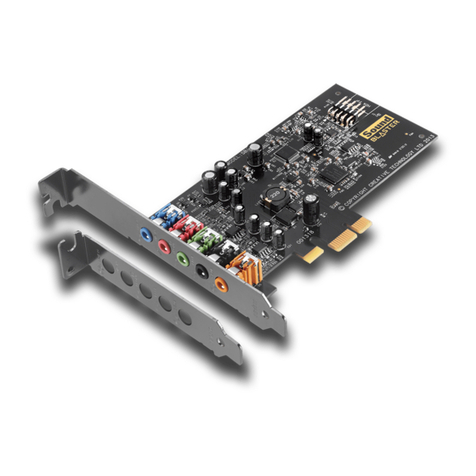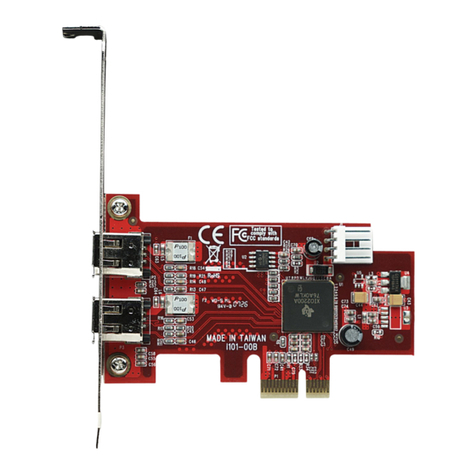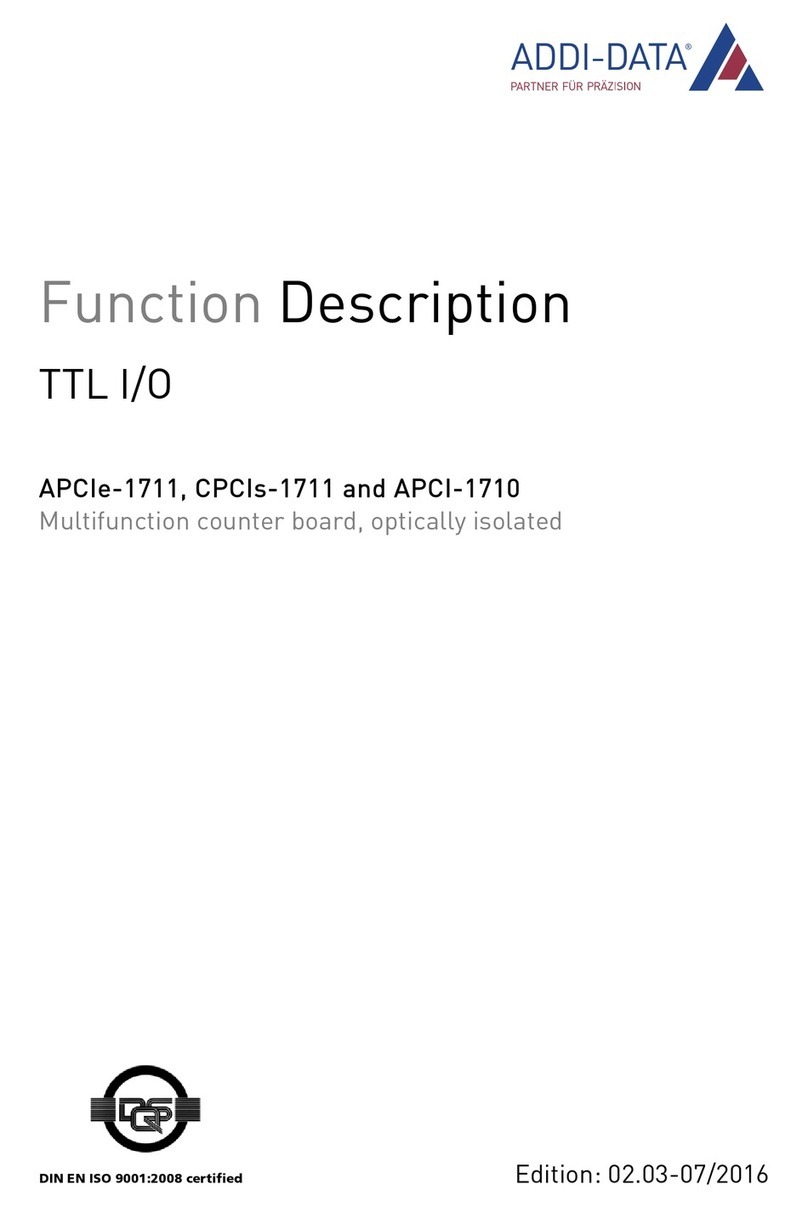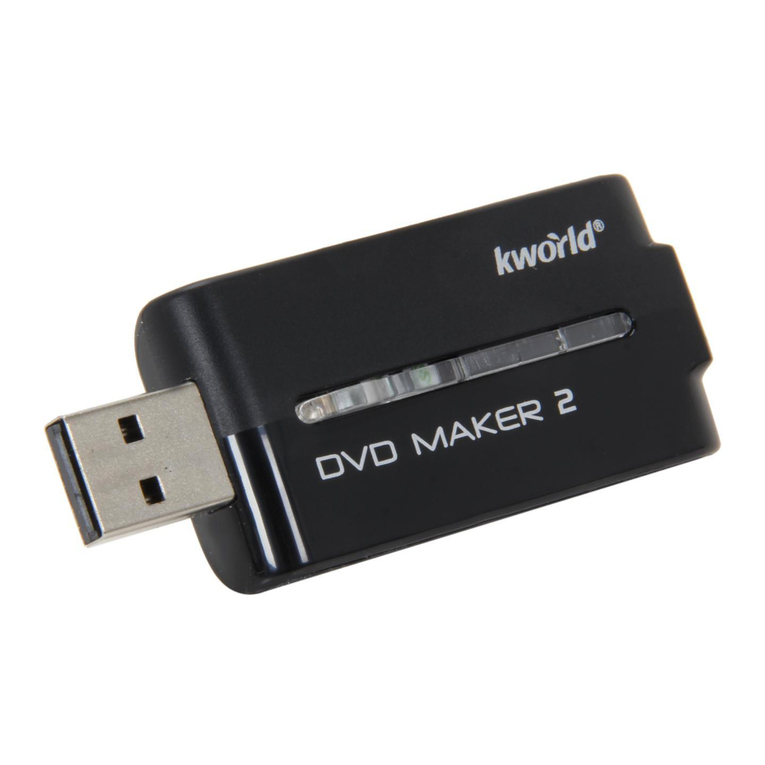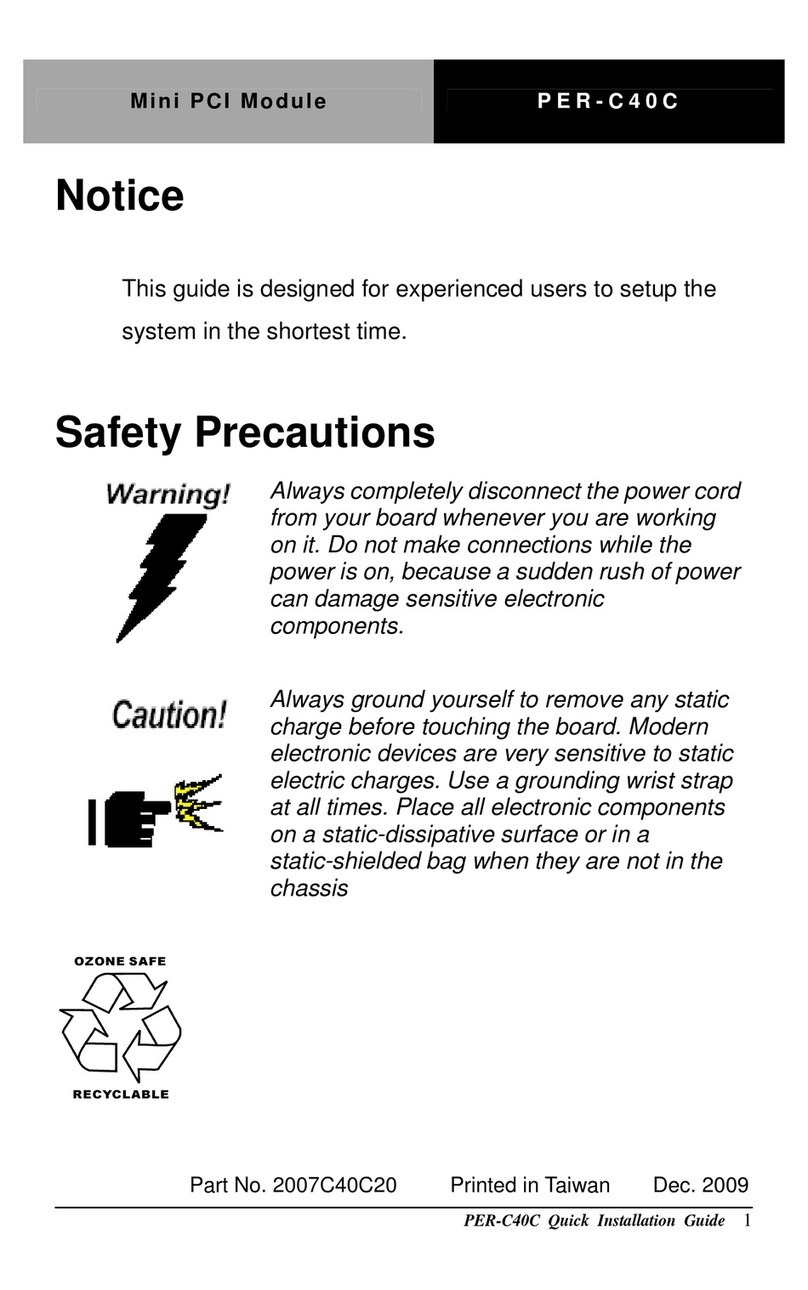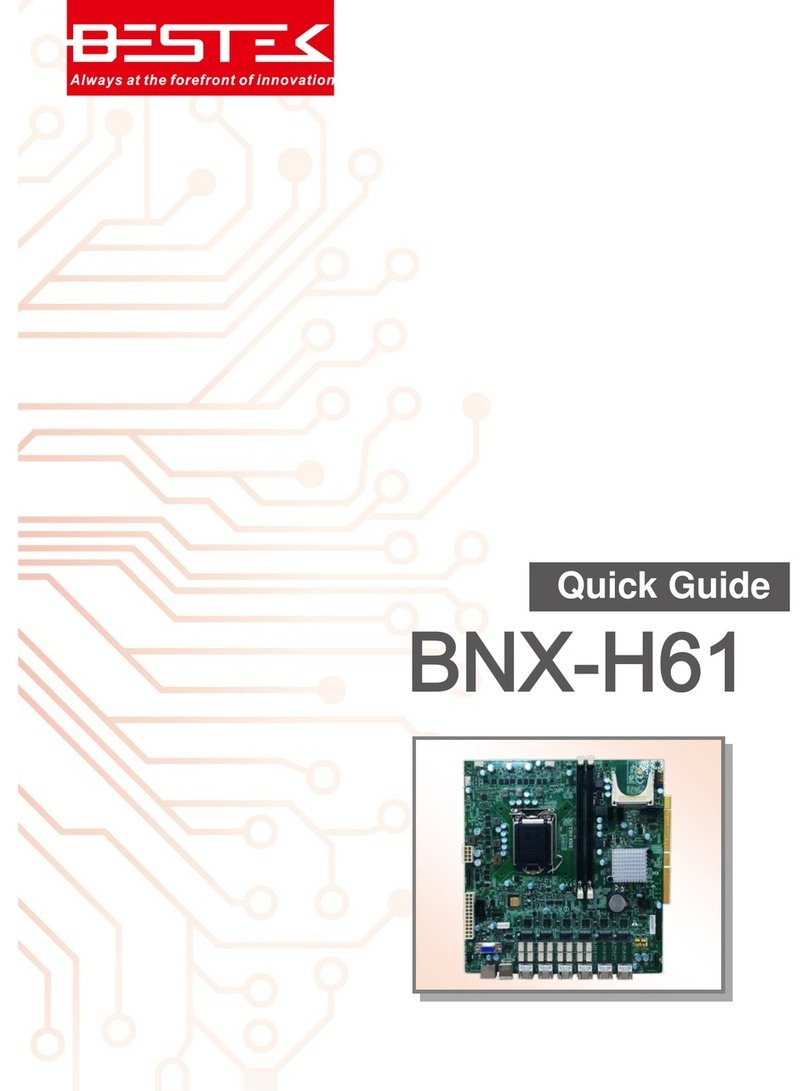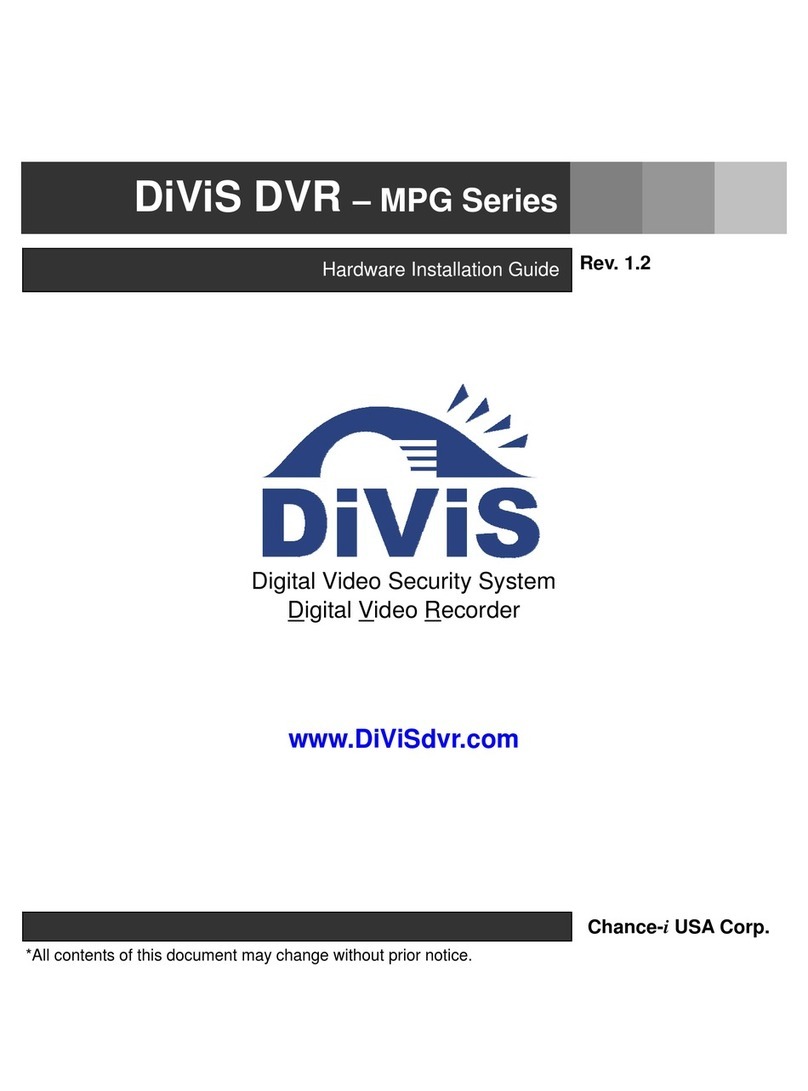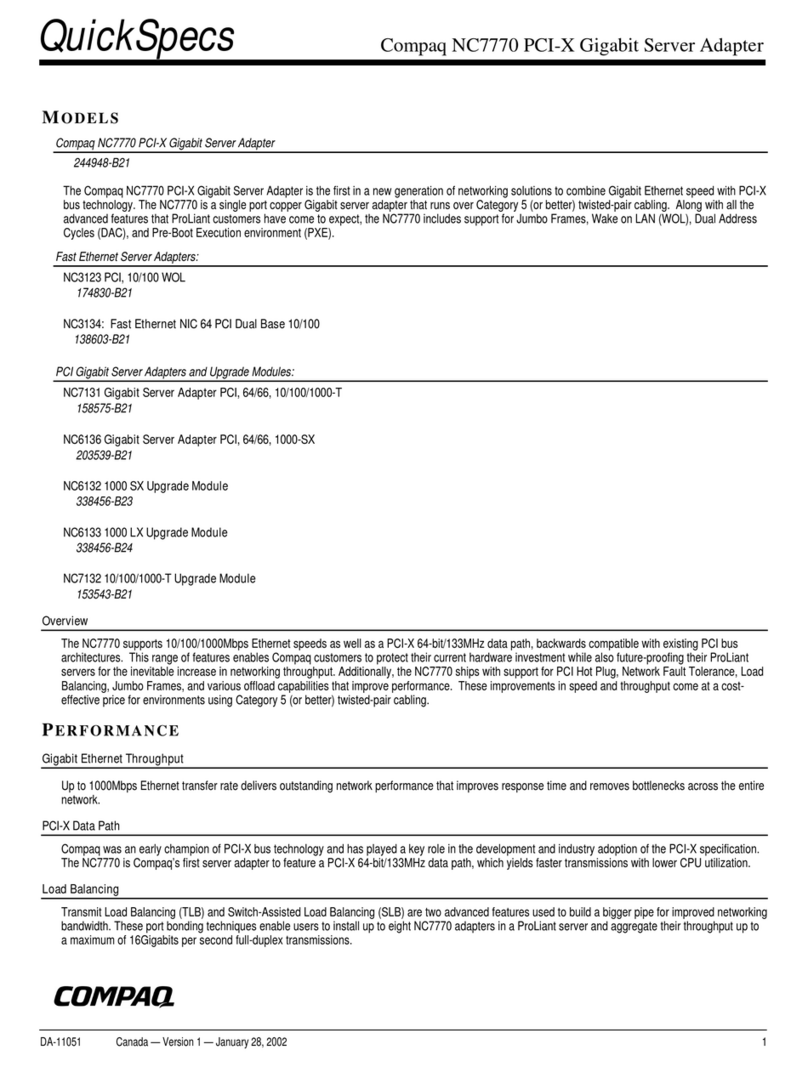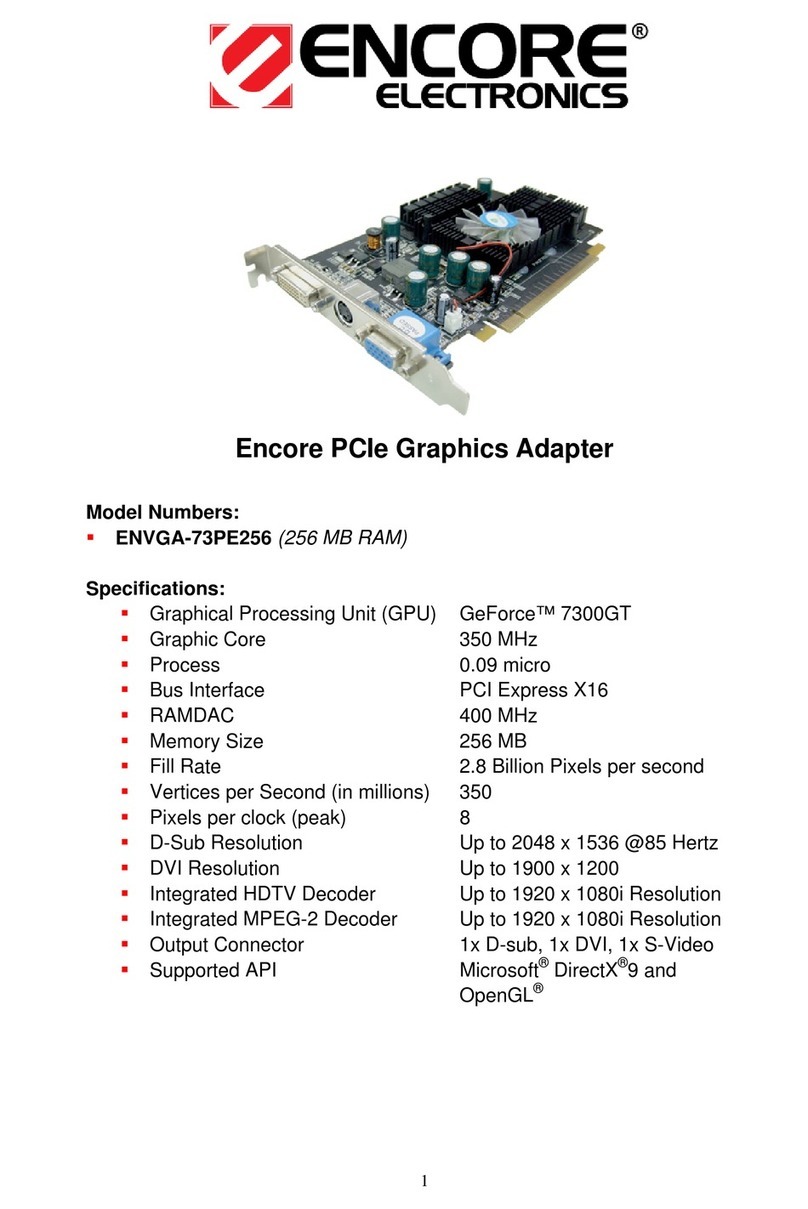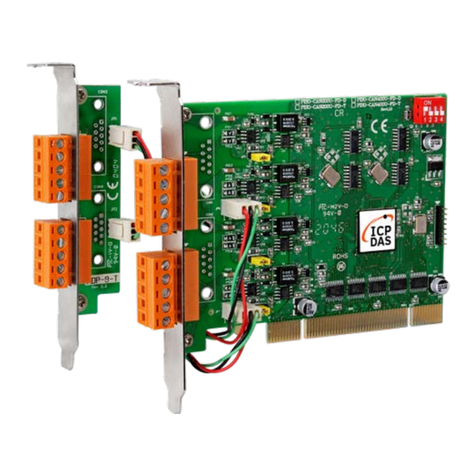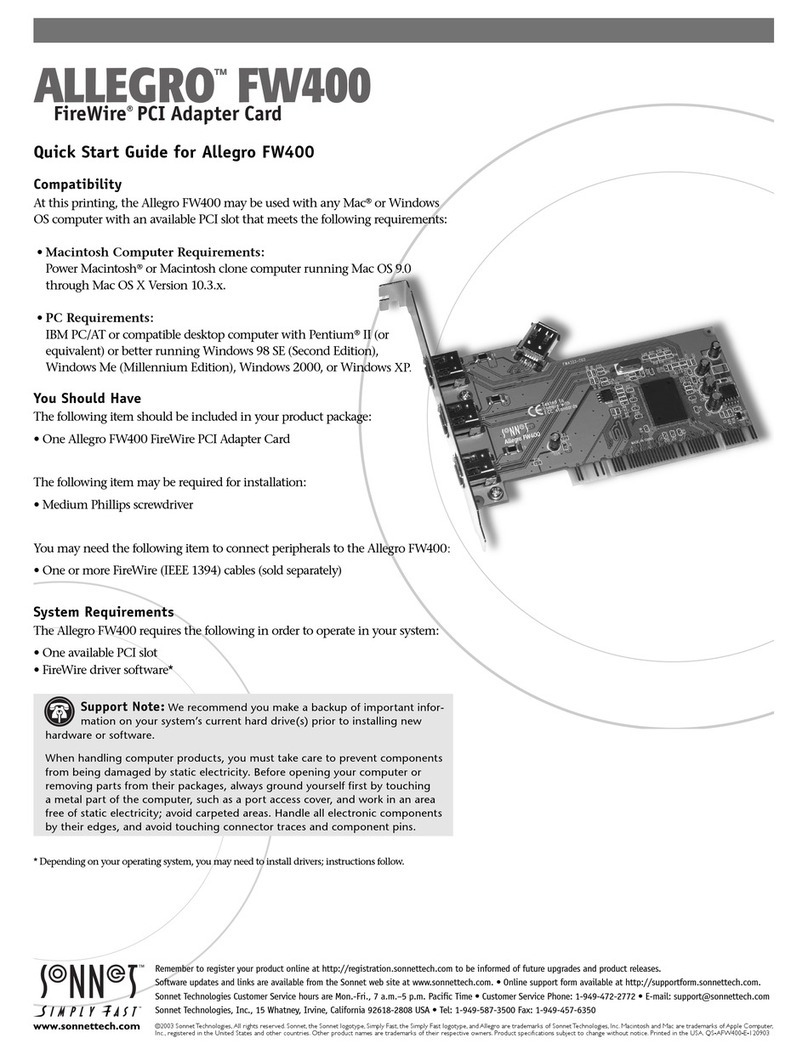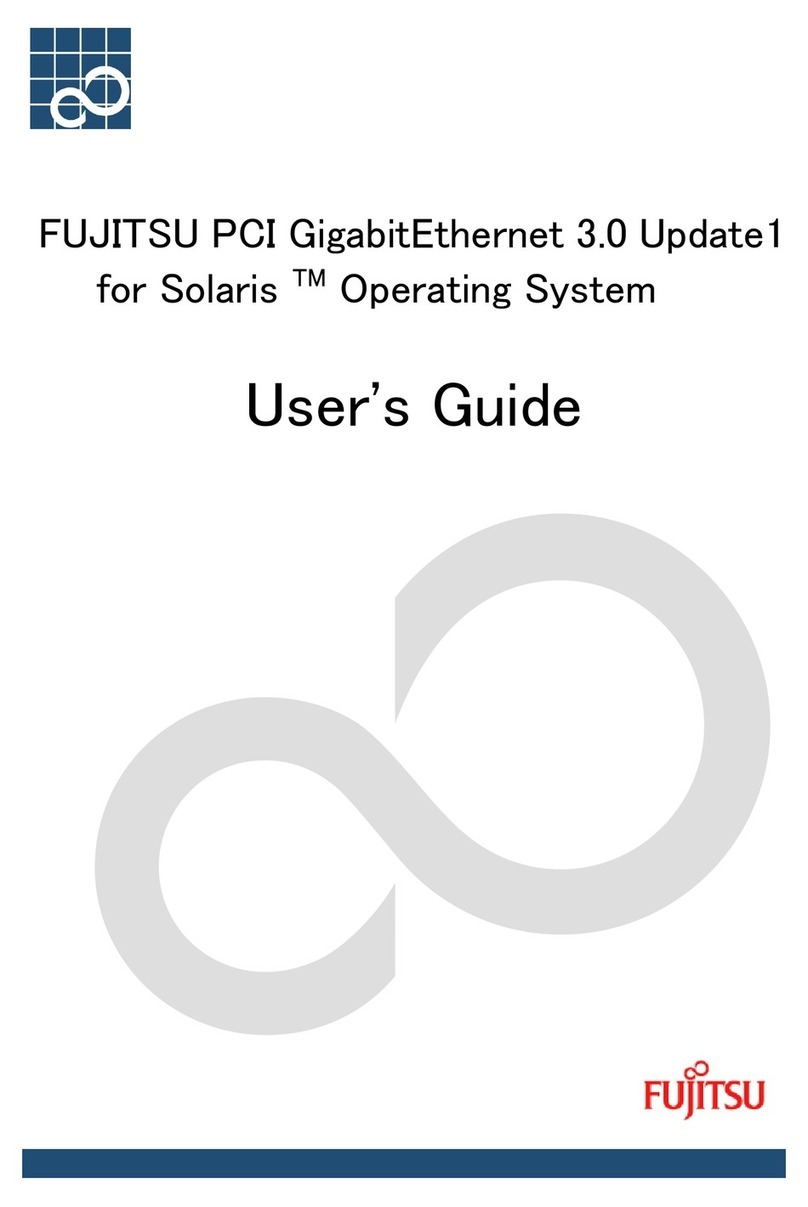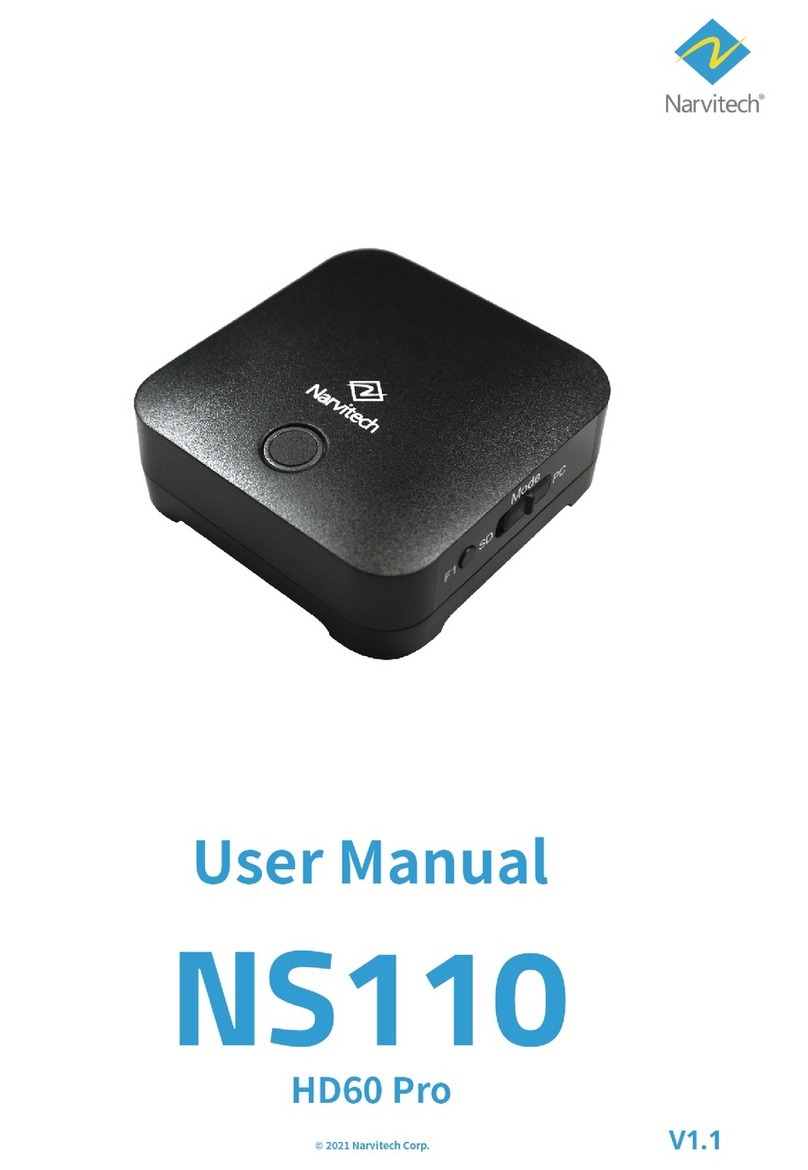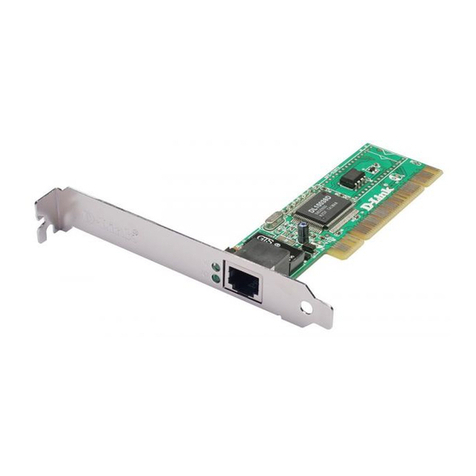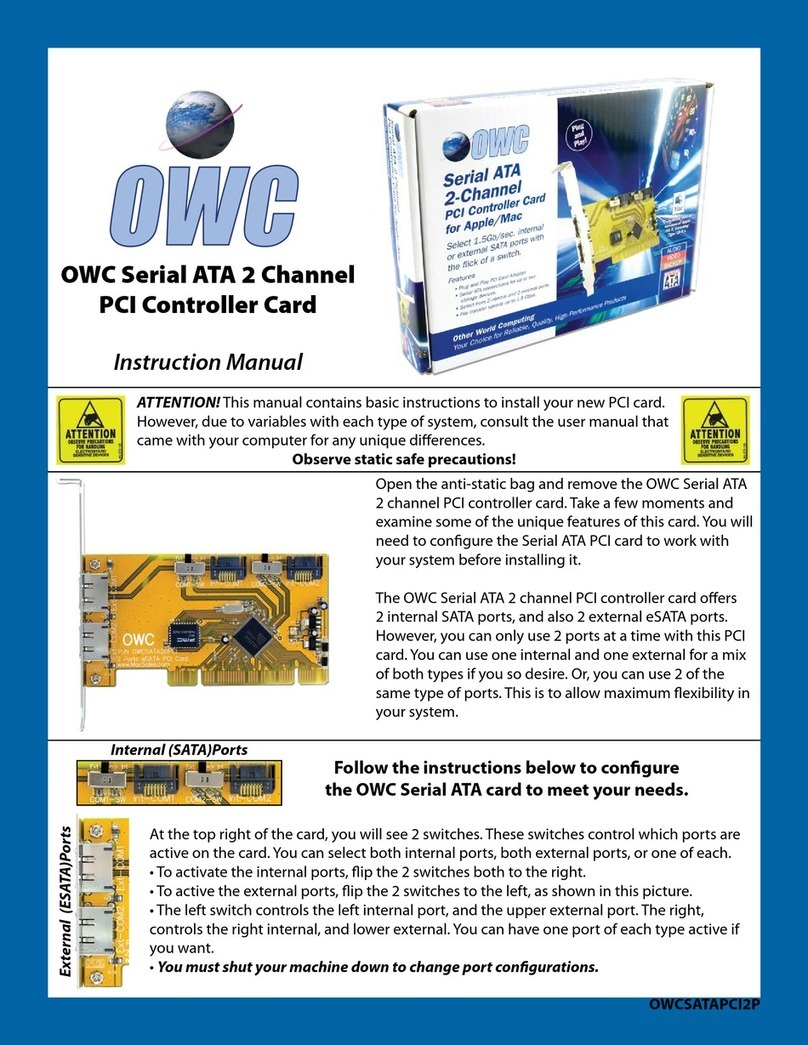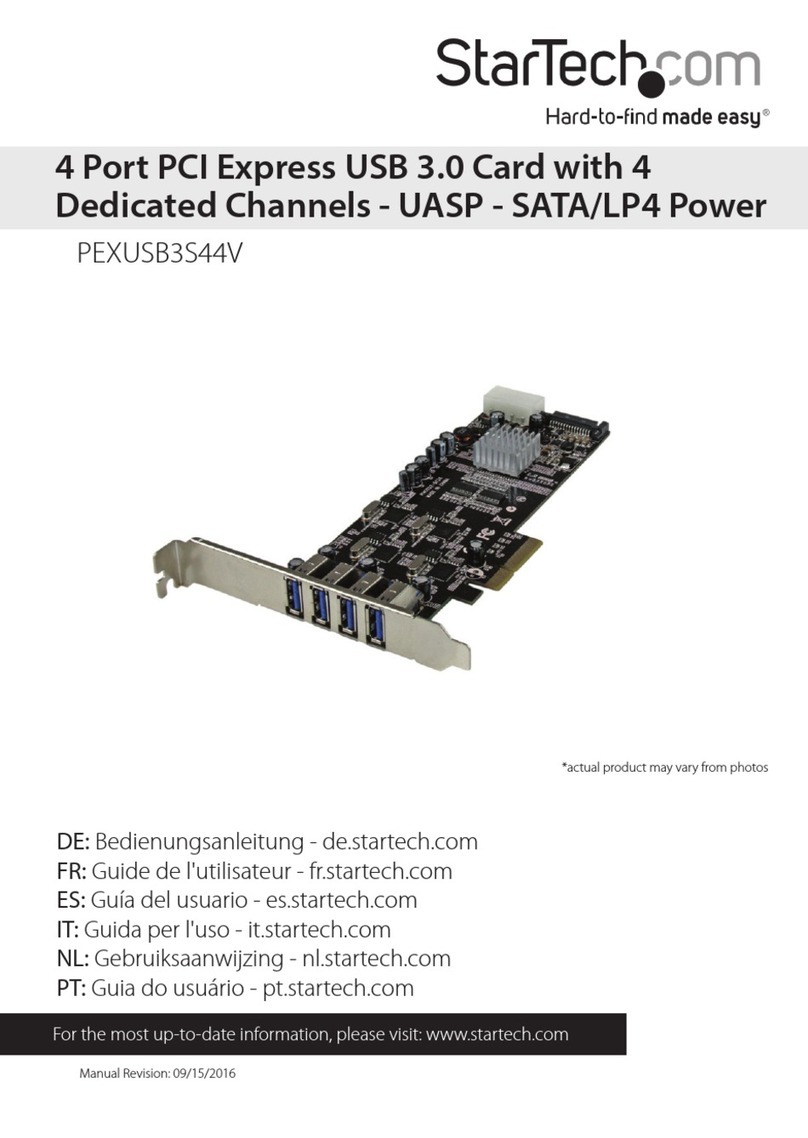Creative SBPCI 128 User manual

User’s Guide
SBPCI™128
Information in this document is subject to change withoutnotice and does not represent a commitment on thepart of Creative Technology Ltd. No part of this manual
may be reproduced or transmitted in any form or by any means, electronic or mechanical, including photocopying and recording, for any purposewithoutthe written
permission of Creative Technology Ltd. The software described in this document is furnished under a license agreement and may be used or copied only in
accordance with the terms of the license agreement. It is against the law to copy the software on any other medium except as specifically allowed in the license
agreement. The licensee may make one copy of the software for backup purposes.
Copyright © 1998-1999 by Creative Technology Ltd.
All rights reserved.
Version 1.0, May 1999
Trademarks
Sound Blaster is a registered trademark, and Blaster is a trademark of Creative Technology Ltd.
Intel and Pentium are registered trademarks of Intel Corporation.
Microsoft, MS-DOS, Windows, and the Windows logo are registered trademarks of Microsoft Corporation.
All other products are trademarks or registered trademarks of their respective owners.
This card is covered by one or more of the following U.S. patents:
4,404,529; 4,506,579; 4,699,038; 4,987,600; 5,013,105; 5,072,645; 5,111,727; 5,144,676; 5,170,369; 5,248,845; 5,298,671; 5,303,309; 5,317,104; 5,342,990;
5,790,837.

Safety & Regulatory Information
The following sections contain notices for
various countries:
CAUTION: This device is intended to be installed
by the user in a CSA/TUV/UL certified/listed IBM
AT or compatible personal computers in the
manufacturer’s definedoperator access area. Check
the equipment operating/installation manual and/or
with the equipment manufacturer to verify/confirm
if your equipment is suitable for user-installed
application cards.
Modifications
Any changes or modifications not expressly
approved by the grantee of this device could void
the user’s authority to operate the device.
Compliance
This product conforms to the following Council
Directive:
❑Directive 89/336/EEC, 92/31/EEC (EMC)

iii
Contents
Knowing Your SBPCI™ 128 Card
Introduction ..........................................................................................................................................................................................5
Checking System Requirements .........................................................................................................................................................5
Using This Guide .................................................................................................................................................................................5
Getting More Information.......................................................................................................................................................6
Document Conventions...........................................................................................................................................................6
Preliminary Step for Windows 95 users..............................................................................................................................................7
On the Audio Card...............................................................................................................................................................................8
To Install the Card and Related Hardware..........................................................................................................................................8
To Install SBPCI 128 in Windows 95/98............................................................................................................................................9
To Install Audio Drivers........................................................................................................................................................10
For Version (4.00.950/A) ..........................................................................................................................................10
For Version 4.00.950B/C...........................................................................................................................................10
For Windows 98.........................................................................................................................................................10
To Install Software.................................................................................................................................................................11
To Test the Installation...........................................................................................................................................................11
To Install Media Player .............................................................................................................................................12
To Uninstall SBPCI 128........................................................................................................................................................12
To Install SBPCI 128 in Windows NT 4.0........................................................................................................................................12
To Install Audio Drivers........................................................................................................................................................13
To Test the Installation...........................................................................................................................................................13
To Uninstall SBPCI 128........................................................................................................................................................13
If a Windows NT 4.0 Service Control Manager error message appears ............................................................................13
General Specifications.......................................................................................................................................................................14
Wave-Table Synthesis................................................................................................................................................14
3D Audio Technology...............................................................................................................................................14

iv
Memory Subsystem ..................................................................................................................................................14
MIDI Interface/Joystick Port....................................................................................................................................14
On-Board Connectors...............................................................................................................................................15
Works With The Following Standards.....................................................................................................................15
Audio Mixer..............................................................................................................................................................15

Knowing Your SBPCI™128 Card
Introduction Congratulations on your purchase of Creative SBPCI™128 audio card. With its high PCI bus
SBPCI 128 is the ideal choice for your computer.
Featuring 128-voice wave-table synthesis with high sample rate convertors, SBPCI 128
ensures a high level of audio quality and performance.
In addition, SBPCI 128 supports localized three-dimensional sound immersion and spatial
sound enhacement in two-speaker environments. Full duplex operation also allows
simultaneous audio recording and playback.
SBPCI 128's compatibility with Sound Blaster PCI ensures you of near perfect Sound Blaster
compatibility on legacy applications. Its use of the Plug and Play (PnP) technology also helps
make SBPCI 128 one of the easiest audio cards to install.
We believe your SBPCI 128 card will give you years of enjoyment of high-quality sound on
your PC.
Checking
System
Requirements
Your audio card requires at least:
❑Pentium class 90MHz or 166MHz (recommended) computer with a free PCI slot
❑16 MB RAM (32 RAM recommeded)
❑Windows NT 4.0 or Windows 95/98
❑Passive or amplified speakers (Cambridge SoundWorks speakers recommended)
Using This
Guide
This guide explains the various hardware components on your audio card, and also shows you
how to install the card into your computer.

6SBPCI™ 128
Getting More
Information Refer to the online SBPCI 128 Help for more information and instructions on how to use the
various applications found in your package.
Document
Conventions This guide uses the following conventions to help you locate and identify the information you
need:
Text In Represents
bold Text that must be entered exactly as it appears.
italic Titleof a book or a placeholder, whichrepresents the informationyou
must provide.
UPPERCASE Directory name, file name, or acronym.
< > Symbols, letters, and key names on the keyboard.
The notepad icon indicates information that is of particular
importance and should be considered before continuing.
The alarm clock designates a caution or warning that can help you
avoid situations involving risk.

User’s Guide 7
PreliminaryStep
for Windows 95
users
If you are using Windows 95, you need to find your Windows’ version number before you can
proceed to the section “To Install SBPCI 128 in Windows 95/98” on Page 9.
To find your Windows’ version number:
1. Switch on your computer.
2. Click the Start button, point to Settings, and then click Control Panel.
3. In the Control Panel window, double-click the System icon.
Your Windows 95 version number is displayed in the General tabbed page of the Systems
Properties dialog box.
4. Note the version number.
The following are possible Windows 95 version numbers:
❑4.00.950
❑4.00.950A
❑4.00.950B
❑4.00.950C

8SBPCI™ 128
On the Audio
Card
Your audio card has these jacks and connectors which allow you to attach other devices:
To Install the
Card and
Related
Hardware
1. Switch off your system and all peripheral devices, and then touch a metal plate on your
computer to discharge any static electricity.
2. Unplug the power cord from the wall outlet.
3. Remove the cover of your computer to expose the motherboard and PCI slots.
4. Find an available PCI slot. Remove the cover plate at the back of the computer to create an
opening for the audio card's jacks. Place the screw aside for later use.
5. Adjust the Line Out/Speaker Out jumper (JP1) as follows:
❑If you are using powered speakers for the Line Out/Speaker Out jack, set the jumper as
shown in Figure 2.
Joystick/MIDI connector
Connects a joystick or a MIDI device. You can buy
an optional MIDI kit that allows you to plug in the
joystick and MIDI device simultaneously.
Line Out/Speaker Out jack (Green)
Connects powered and non-powered speakers.
Microphone In jack (Red)
Connects an external microphone for voice input.
CD Audio connector
Connects a CD-ROM drive
using an MPC-3 CD audio
cable.
Telephone Answering Device/Modem connector
Connects a voice modem to transmit and receive
audio signals.
AUX connector
Connects a TV card or
second CD-ROM drive.
Line In jack (Blue)
Connects externaldevicessuch ascassette,DAT,
or Minidisc player) for playback and recording.
Figure 1: Jacks and connectors on your audio card.
Front Line Out/Speaker
Out jumper (JP1)
Selects between Line Out
(default) or Speaker Out
mode for the Green jack.
Jacks are one-hole connecting
interfaces whereas connectors are
multi-pin interfaces..

User’s Guide 9
❑If you are using non-powered speakers for the Line Out/Speaker Out jack, set the jumper as
shown in Figure 3.
6. Align your card's 32-bit slot connector with the expansion slot and press the card into the
slotgently and evenly, with the externaljacks facing theoutside of the computer. Ensure that
the bus connector has been pressed in as far as it will go and is sitting firmly inside the
expansion slot.
7. Plug the CD-ROM audio cable into the CD Audio connector and plug the speakers into the
Line Out/Speaker Out jack (see Figure 1). Make any other internal connections applicable
for your computer, including modem or video card connections.
8. Replace the computercover. Plug all componentsback into their respective outlets.You may
now start the computer.
To Install
SBPCI 128 in
Windows 95/98
❑To Install Audio Drivers
❑For Version (4.00.950/A)
❑For Version (4.00.950B/C)
❑For Windows 98
❑To Install Software
❑To Test the Installation
❑To Uninstall SBPCI 128
Note: When you start your computer after installing the audio card, Windows 95/98
automatically detects the audio card installed in your computer.
Figure 2: Jumper settings for Line Out mode (default) Figure 3: Jumper settings for Speaker Out Mode

10 SBPCI™ 128
To Install Audio
Drivers
For Version (4.00.950/A) 1. In the audio card’s New Hardware Found dialog box, select the Driver From Disk Provided
By Hardware Manufacturer option and click the OK button.
2. Insert the installation CD into the CD-ROM drive.
3. In the Install From Disk dialog box, type D:\AUDIO\Language\WIN95DRV (where D:
represents your CD-ROM drive and Language represents the language of the software that you
want to install)
and click the OK button.
4. Follow the instructions on the screen to complete the audio driver installation.
For Version 4.00.950B/C 1. Insert the installation CD into the CD-ROM drive.
2. In the Update Device Driver Wizard dialog box, click the Next button.
3. Click the Other Locations option.
4. Type the path or click the Browse button to select the path of the drivers’ location (that is,
D:\AUDIO\Language\WIN95DRV, where D: represents your CD-ROM drive and Language
represents the language of the software that you want to install)
and click the OK button.
5. Click the Finish button.
If the system prompts you for the installation CD again,click the OK button and repeatfrom
Step 4.
The audio drivers are copied to your system.
For Windows 98 1. Insert the SBPCI 128 installation CD and click the Next button.
2. Selectthe Search For The BestDriver For Your Device (Recommended) option andclick the
Next button.

User’s Guide 11
3. Clear all check boxes and check only the Specify a Location check box. Type or click the
Browse button and point to the path of the drivers’ location (that is,
D:\AUDIO\Language\WIN95DRV, where D: represents your CD-ROM drive and Language
represents the language of the software that you want to install)
and click the Next button.
4. Click the Next button to install the Windows 98 drivers.
5. Click the Finish button when the installation is complete.
6. Restart your system when prompted.
To Install Software 1. Make sure that the installation CD is in your CD-ROM drive. Double-click the My
Computer icon on your Windows Desktop, then double-click on your CD-ROM drive icon.
2. The SBPCI 128 installation screen appears.
Click the OK button.
3. Follow the instructions on screen to complete the installation.
4. Restart your system when prompted.
To Test the
Installation After the drivers are installed, you can use Windows 95/98 Media Player to test whether your
audio card is working properly.
1. Click the Start button, point to Programs, point to Accessories, point to Multimedia (for
Windows 98, choose Entertainment), and then click Media Player.
The Media Player appears as shown in Figure 4.
Figure 4: The Media Player Interface

12 SBPCI™ 128
2. On the Device menu, click Sound.
3. In the Open dialog box, select a sound file from the list, and then click the Open button.
4. On the Media Player, click thePlay button.You shouldhear theselectedsound being played.
If you encounter any problems, consult the “Troubleshooting in Windows 95/98” section of
the online SBPCI 128 Help.
To Install Media Player If you do not have Windows 95/98, follow the steps to install it.
1. Click the Start button, point to Settings, and then click Control Panel.
2. In the Control Panel window, double-click the Add/Remove Program icon.
3. Click the Windows Setup tab.
4. Select the Multimedia check box, and then click the Details button.
5. In the Multimedia dialog box, select the Media Player check box, and then click the OK
button.
6. Follow the instructions on the screen to complete the installation.
To Uninstall
SBPCI 128 1. Click the Start menu, point to Settings and click Control Panel.
2. Double-click the Add/Remove Programs icon.
3. On the Install/Uninstall tabbed page, select SBPCI 128.
4. Click the Add/Remove button, and then click the Yes button when prompted to remove the
software.
To Install
SBPCI 128 in
Windows NT 4.0
❑To Install Audio Drivers
❑To Test the Installation
❑To Uninstall SBPCI 128
❑If a Windows NT 4.0 Service Control Manager error message appears ...

User’s Guide 13
To Install Audio
Drivers 1. Insert the installation CD into your CD-ROM drive.
The installation screen appears.
2. Follow the instructions on the screen to complete the installation.
To Test the
Installation You may run a simple application to test the card’s MIDI and wave sound playback. This
ensures that the card is properly installed and that there are no conflicts in the IRQ, DMA, or
I/O settings.
1. In the Start menu, point to Programs, point to Accessories, point to Multimedia, and then
click Media Player.
2. On the File menu, click Open.
3. Browse to any folder that contains a file with the extension .wav. Select the file and click the
Open button. Click the Play button to play the file.
To Uninstall
SBPCI 128 1. Click the Start button, point to Settings and click Control Panel. Double-click the
Multimedia icon.
2. From the Audio Devices tabbed page, select any existing audio devices and then click
Remove. Click Yes when prompted to remove the driver.
3. Close the Multimedia Properties window and restart your computer.
If a Windows NT 4.0
Service Control
Manager error
message appears ...
If error messages appear at system restart, it is because you removed an audio card from your
computer after you have successfully installed the SBPCI 128 card. The drivers of the removed
audio card cannot locate the card.
To solve this problem:
1. Log on to your computer as Administrator.
2. Click the Start button, point to Settings, and then click Control Panel.
3. Double-click the Multimedia icon, and then click the Devices tab.
4. In the list, under these entries

14 SBPCI™ 128
❑Audio Devices
❑MIDI Devices And Instruments
remove all items except
• Audio for SBPCI 128
• MIDI for SBPCI 128
5. Click the OK button to close the dialog box.
The drivers are removed.
General
Specifications
Wave-Table Synthesis ❑Creative synthesis engine
❑Digital effects engine for reverb and chorus
❑128-voice polyphony and multi-timbral capability
❑2MB, 4MB and 8MB sample sets included
3D Audio Technology ❑Support for Microsoft DirectSound and DirectSound3D audio technology in two-speaker
mode
❑Multi-Algorithm reverb and chorus
Memory Subsystem ❑Utilizes system RAM for wave-table samples
❑User configurable for 2MB, 4MB or 8MB
MIDI Interface/Joystick
Port ❑Built-in 15-pin MIDI interface (cable available separately)
❑Compatible with Sound Blaster and MPU-401 UART modes
❑IBM-compatible 15-pin joystick port with analog support

User’s Guide 15
On-Board Connectors ❑Line In
❑Microphone In
❑Line Out/Speaker Out
❑MIDI/Joystick port
❑Telephone Answering Device In/Out
❑CD Audio In
❑Auxiliary In
Works With The Follow-
ing Standards ❑Windows 95/98
❑Windows NT 4.0
❑General MIDI
❑Plug-and-Play
❑Sound Blaster PCI
❑Microsoft DirectSound, DirectSound3D, and derivatives
Audio Mixer ❑6 Channel Mixer control for access to CD/Auxiliary, Microphone/Line, Music Synthesizer
and Digital Audio
❑Spatial audio control for Digital Audio and Music Synthesizer
❑Reverb and Chorus control for Music Synthesizer
Table of contents
Other Creative PCI Card manuals
